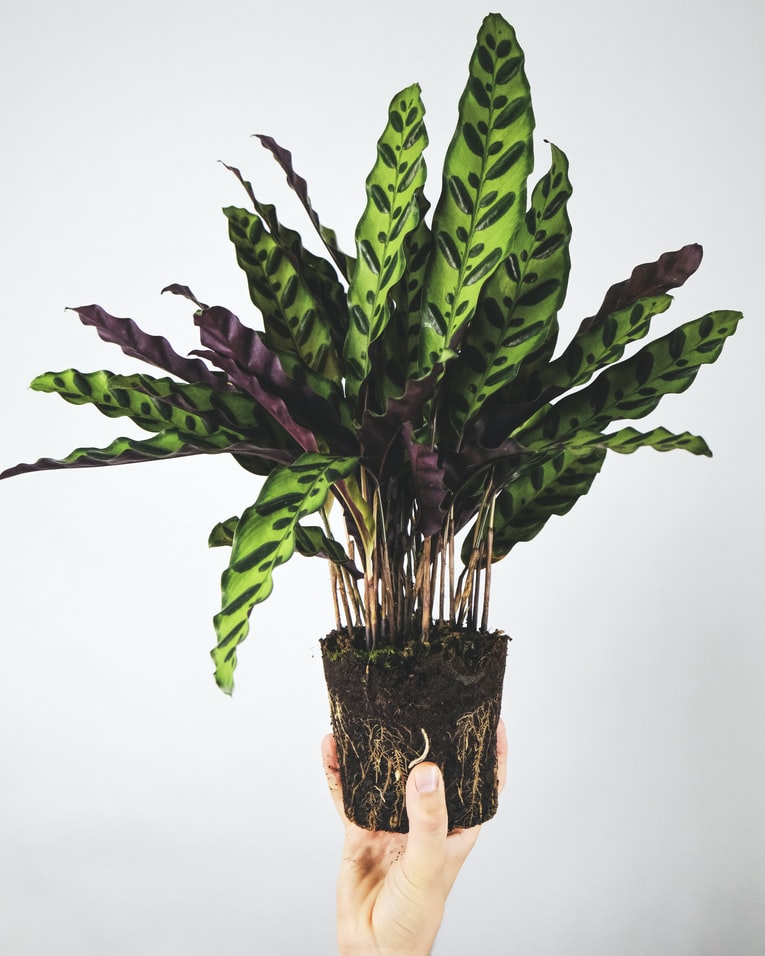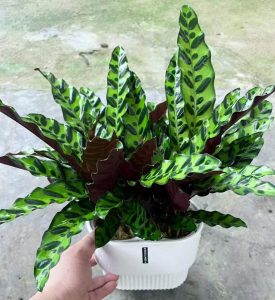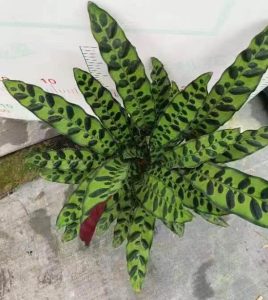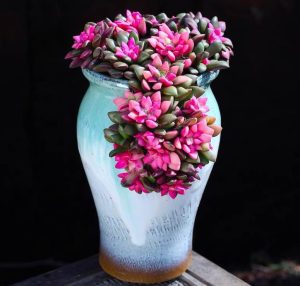Calathea lancifolia, we also call it Calathea Insignis, commonly known as the "Rattlesnake Plant", but we used to name it as "Panda's eye" in Chinese. It is a perennial evergreen ornamental plant in the Marantaceae family, Calathea genus. The leaves are upright, lance-shaped with long wavy edges formed in clumps, dark green round spots on the surface, and the undersides of the leaves are deep purple.
The spots resemble the eyes of pandas, which gives its "panda's eye" Chinese name. This unique combination of colors and patterns makes the Rattlesnake Plant an attractive addition to any indoor space due to its sharp contrast and a strong artistic sense. Another special and interesting feature of Calathea lancifolia is its leaves become limp and loose during daytime, while become upright at night.

